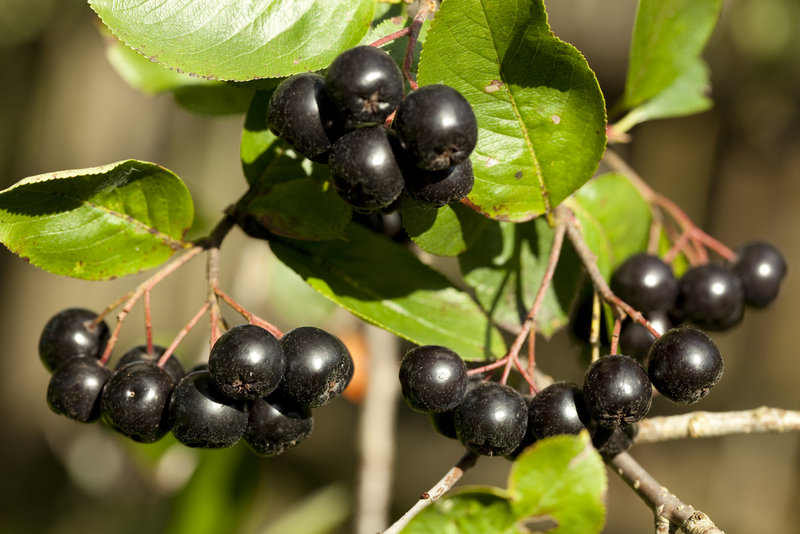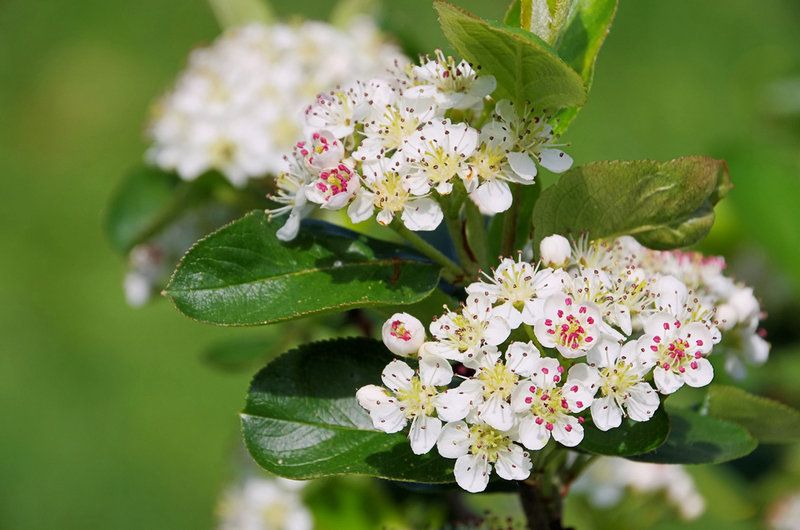While Aronia, or chokeberry, is being promoted as a potential new crop for farmers and home gardeners in New England, it isn’t likely to replace the blueberry.
Lois Berg Stack, an ornamental horticulture specialist with the University of Maine Cooperative Extension at Orono, discussed the shrub at New England Grows in Boston earlier this month.
Aronia is native to the eastern United States and southern Canada, and is used occasionally in the landscape.
“It has a really beautiful white spring flower that you see at woodland edges,” Stack said. “Bumblebees just love this flower.” It has spreading canes, and grows 6 to 10 feet high.
The major problem with Aronia is that while the berries are edible raw, they are sour and don’t taste good, Stack said. They have to be processed to be enjoyable, and for that reason, she thinks people who grow the plant commercially are likely to do so as a sideline — a crop in a small space that brings in a little extra money.
There are three basic kinds of native chokeberries: Aronia melanocarpa, the black chokeberry; Aronia arbutifolia, the red chokeberry; and Aronia prunifolia, the purple chokeberry, which is a natural hybrid of the red and black.
The Aronia that people should grow for fruit is the black. The red chokeberries are smaller and more sour, and don’t have as many antioxidants as the black chokeberries.
Probably the best chokeberries for fruit, though, are coming to the garden through Europe.
Stack cited an article by Mark Brand of the University of Connecticut saying that the Aronia cultivar “Viking,” which has larger and sweeter fruit than the regular black chokeberry, has been shown in DNA testing to have a little bit of Sorbus aucuparia, or mountain ash, in the mix. The breeding reportedly was done by a Russian named Ivan Michurin. Another cultivar, “Nero,” is similar to Viking, Stack said.
But even the Viking is not going to taste good raw, so what is its commercial purpose?
Mostly juices.
“Aronia has a lot of antioxidants, and its juices have been shown to have a positive effect on some heart conditions,” Stack said. “The free radicals are off the charts.”
She said blended juices with Aronia are quite good, and that Aronia jellies are tasty. The Fedco Trees catalog says that if you mash up a gallon of berries with a quart of water, put the mixture in a jelly bag and wring it out several times, the juice is quite tasty on its own or diluted. The pulp can be fed to chickens.
Because it is illegal to grow currants in Maine, Stack said, Aronia could be a replacement for currants in some recipes.
Chokeberries taste better dried than fresh and work well in scones and muffins, Stack said. The Fedco catalog also said they are good in tarts, wine and even pilaf — but I would have to see the recipe for that.
Stack also went to a program where someone made Gummy Bears using Aronia, and those were very tasty. And there is research being done to see if the Aronia can be used as a natural dye.
For home gardeners, Stack said, Aronia has several good qualities — and any use of the fruit would be secondary.
“It grows in wet or dry soil, and is a great buffer plant,” she said. “It suckers well, and is great for wildlife support.”
All of the Aronias have good spring flowers and fall color, although the fall color is brighter on the red chokeberry.
A fully mature, well-tended plant grown in the sun could produce 20 pounds of fruit — more than enough for a family — and it freezes well.
Fedco sells one variety of red chokeberry, “Brilliantissima,” and two varieties of black chokeberry, “Viking” and “Morton” Iroquois Beauty, which grows only 3 to 5 feet tall. The Morton costs $12.50 per plant; the other two cost $12. Fedco’s ordering deadline for trees and shrubs is March 8.
It will take three years after planting Aronia to get much fruit, and they are susceptible to damage from deer, Japanese beetles and aphids. But Stack thinks they have tough enough skin to escape damage from the spotted wing drosophila.
If I were going to grow Aronia, I think it would be for the beauty rather than the fruit.
Tom Atwell has been writing the Maine Gardener column since 2004. He is a freelance writer gardening in Cape Elizabeth and can be contacted at 767-2297 or at:
tomatwell@me.com
Copy the Story Link
Send questions/comments to the editors.




Success. Please wait for the page to reload. If the page does not reload within 5 seconds, please refresh the page.
Enter your email and password to access comments.
Hi, to comment on stories you must . This profile is in addition to your subscription and website login.
Already have a commenting profile? .
Invalid username/password.
Please check your email to confirm and complete your registration.
Only subscribers are eligible to post comments. Please subscribe or login first for digital access. Here’s why.
Use the form below to reset your password. When you've submitted your account email, we will send an email with a reset code.